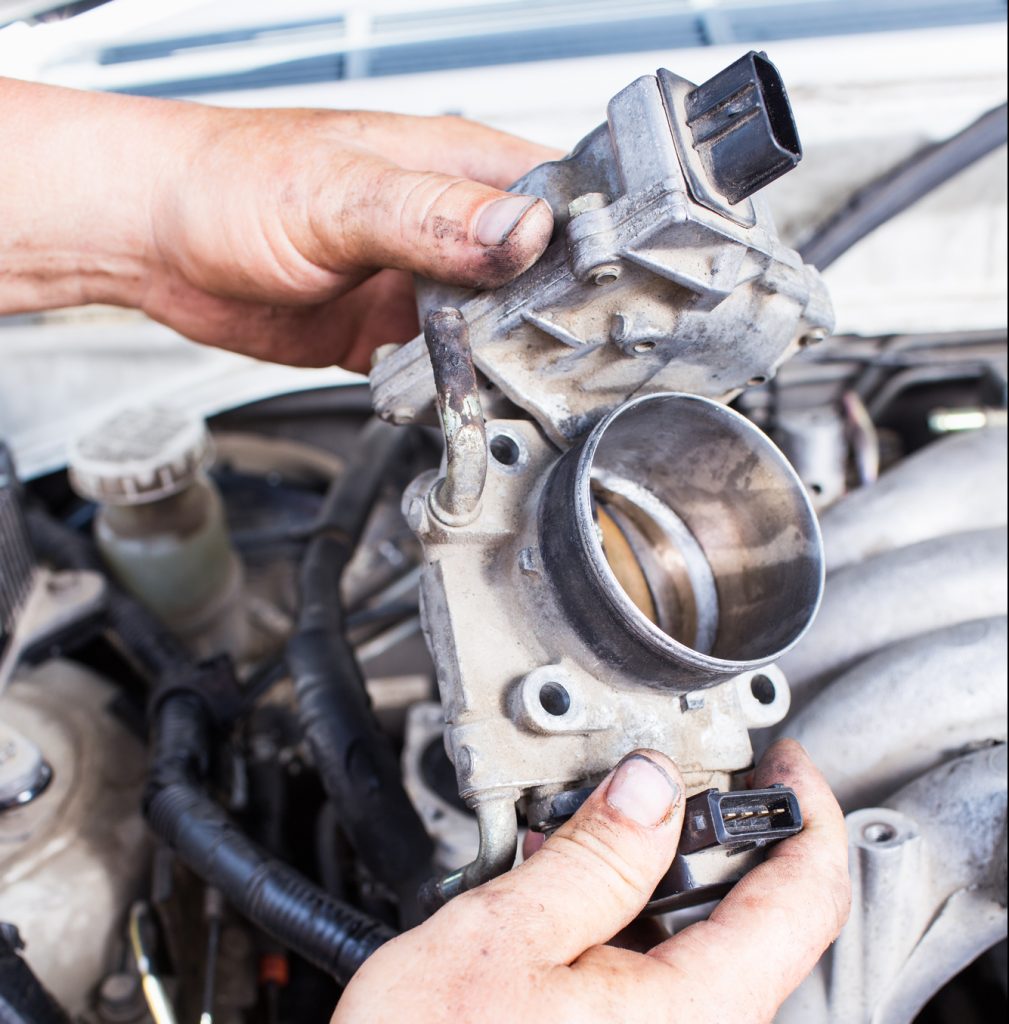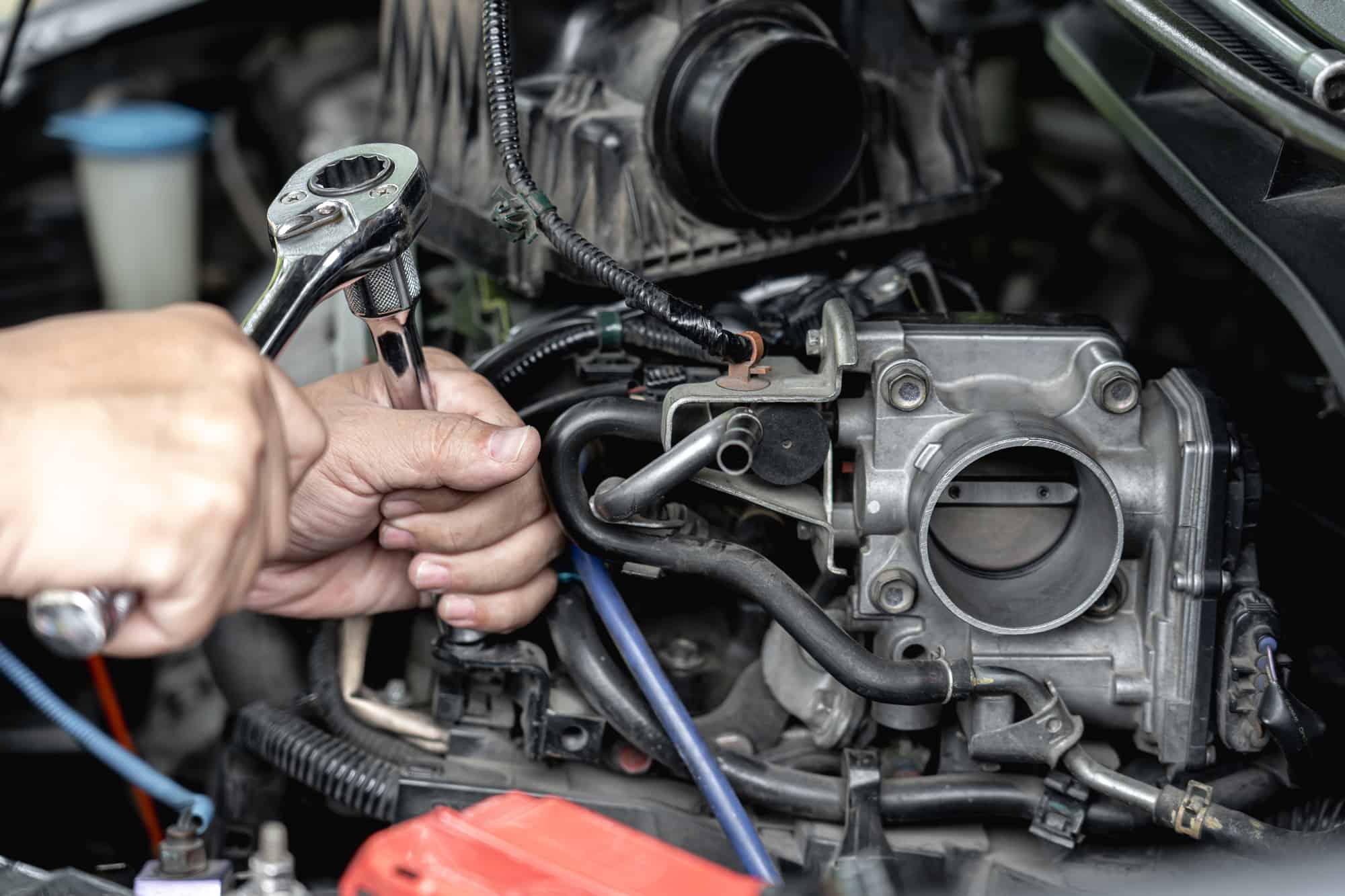A bad idle air control valve (IAC) can cause a variety of problems in your vehicle, which can lead to costly repairs if left unaddressed.
The IAC valve is responsible for regulating the engine idle speed, and when it fails, it can cause the engine to stall, run rough, or have a fluctuating idle speed.
One of the most common symptoms of a bad IAC valve is a rough idle. When the valve is malfunctioning, the engine may idle too high or too low, causing the vehicle to shake or vibrate.
Ignoring a bad idle air control valve can lead to more serious problems, such as stalling or engine damage.
In this article, we will discuss in detail the signs of a bad or failing idle air control valve to look for and how you can go about diagnosing and fixing the a faulty or stuck IAC valve.
How do you know if your idle air control valve is bad?
If you suspect that your idle air control valve (IAC) is bad, there are several common symptoms that you can look out for.
One of the most noticeable signs of a bad IAC is a fluctuating or incorrect idle speed. You may notice that your engine is idling too high or too low, or that it is surging or stalling.
Another common symptom is an illuminated check engine light on your dashboard. This can indicate that there is a problem with the IAC circuit or signal. If your engine won’t start or is difficult to start, this could also be a sign of a bad IAC.

An idle air control valve (IAC valve) is a component of the engine’s air intake system that regulates the amount of air that enters the engine while idling.
The IAC valve helps to maintain the engine’s idle speed by controlling the amount of air that bypasses the throttle plate. It is typically located on the throttle body and is controlled by the engine control module (ECM).
The purpose of the idle air control valve is to regulate the engine’s idle speed. When the engine is idling, the throttle plate is closed, which means that there is no air entering the engine through the throttle body.
This can cause the engine to stall or run roughly. The IAC valve opens to allow a small amount of air to bypass the throttle plate, which helps to regulate the engine’s idle speed.
The IAC valve receives signals from the ECU to adjust the amount of air that enters the engine based on various factors, such as engine load and temperature.
For example, when the air conditioner is turned on, the engine load increases, and the IAC valve will open wider to allow more air to enter the engine and maintain a stable idle speed.
Conversely, when the engine is cold, the IAC valve will open wider to allow more air to enter the engine and help it warm up faster.
Symptoms of a Bad Idle Air Control Valve to Watch Out For
A bad idle air control valve (IAC) can cause a variety of problems with your vehicle. It is responsible for regulating the amount of air that enters the engine while idling, ensuring that the engine runs smoothly.
When the IAC valve fails, it can cause a range of symptoms that can affect the performance of your vehicle.
Here are some common symptoms of a bad idle air control valve that you should watch out for:
1. Fluctuating or Incorrect Idle Speed
When the Idle Air Control valve is functioning correctly, it regulates the engine’s idle speed by controlling the amount of air that enters the engine while the throttle is closed.
However, when the IAC valve is faulty, it may not be able to regulate the amount of air entering the engine, which can cause the engine to idle too high or too low.
This can result in fluctuating or incorrect idle speed. You may notice that your engine is idling too high or too low, or that it is surging or stalling.
2. Illuminated Check Engine Light
A bad idle air control valve can cause a check engine light to illuminate on the dashboard.
This is because the IAC valve is monitored by the ECU, which is responsible for regulating the engine’s idle speed. If the ECU detects an issue with the IAC valve circuit or signal, it will trigger a diagnostic trouble code (DTC) and turn on the check engine light to alert the driver that there is a problem.
The most common DTC associated with a faulty IAC valve is P0505, which indicates an Idle Control System Malfunction. Other DTCs may also be triggered depending on the specific make and model of the vehicle.
3. Stalling or Surging Engine
If your idle air control valve is not functioning properly, it may cause your engine to stall or surge.
A bad Idle air control valve can cause a stalling or surging engine because it controls the amount of air that enters the engine while the throttle is closed. When the IAC valve is faulty, it may not be able to regulate the amount of air entering the engine, which can cause the engine to stall or surge.
For example, if the IAC valve is stuck open, it can cause the engine to idle too high, which can lead to a surge in engine speed.
On the other hand, if the IAC valve is stuck closed, it can starve the engine of air at idle, which can cause the engine to stall.
4. Engine Won’t Start or is Difficult to Start
A bad idle air control valve can also make it difficult for your engine to start or prevent it from starting altogether.
A bad IAC valve can cause an engine that won’t start or is difficult to start because it is responsible for regulating the amount of air that enters the engine while the throttle is closed.
If the IAC valve is faulty, it may not be able to regulate the amount of air entering the engine, which can cause the air/fuel mixture to be too rich or too lean. This can make it difficult for the engine to start, or prevent it from starting altogether.
A faulty IAC valve can cause the engine to run rough or stall shortly after starting, which can make it difficult to keep the engine running. In any case, a faulty IAC valve can compromise vehicle safety and should be replaced as soon as possible.
5. Rough Engine Performance
If your idle air control valve is not working properly, you may notice that your engine is running rough or vibrating excessively.
When the IAC valve is faulty, it can cause the engine to receive too little or too much air, which can result in rough engine performance symptoms such as rough idling, fluctuating idle speed, stalling, and even engine failure to start.
6. Increased Fuel Consumption
A bad idle air control valve can also cause your engine to consume more fuel than usual.
If the IAC valve is faulty, it can cause the engine to receive too little or too much air, which can result in an imbalanced air/fuel mixture.
This can cause the engine to run rich, meaning it is burning more fuel than necessary, which can lead to increased fuel consumption.
A bad IAC can also cause the engine to idle at a higher RPM than normal, which can also cause increased fuel consumption.
Can You Continue Driving with a Bad Idle Air Control Valve?
Continuing to drive with a bad idle air control valve is not recommended. While it may be possible to drive the vehicle with a faulty idle air control valve for a short period, it can lead to various issues and potentially cause further damage to the engine. Here are some reasons why driving with a bad idle air control valve is not advisable:
- Rough Idle: A bad idle air control valve can result in an irregular or rough idle. This can cause the engine to shake or vibrate, leading to a less comfortable driving experience and potential engine damage if left unaddressed.
- Engine Stalling: A malfunctioning idle air control valve can cause the engine to stall unexpectedly, especially when the vehicle is idling or coming to a stop. This can be dangerous, especially in traffic or at intersections, as it can result in a loss of control and potentially cause accidents.
- Poor Fuel Efficiency: The idle air control valve plays a crucial role in maintaining the proper air-fuel mixture during idle conditions. When the valve is not functioning correctly, it can disrupt the fuel delivery and result in poor fuel efficiency. This means you may end up burning more fuel than necessary, leading to increased expenses at the pump.
- Increased Emissions: A faulty idle air control valve can lead to improper combustion, resulting in higher emissions of pollutants such as carbon monoxide (CO) and hydrocarbons (HC). This can contribute to environmental pollution and may even lead to a failed emissions test, depending on local regulations.
While you might be able to drive for a short distance with a bad idle air control valve, it is important to address the issue as soon as possible.
Ignoring the problem can lead to damage to engine components, increased repair costs, and potentially more severe drivability issues.
What is the repair cost for a bad idle air control valve?
The cost of repairing a bad idle air control valve can vary depending on several factors, including the make and model of your vehicle, the severity of the problem, and the location of the repair shop.
According to RepairSmith, the cost of replacing an idle air control valve can range from $120 to $500. This cost may vary depending on the make and model of your vehicle, the price of the part, and the labor charges in your area.
The cost of the part alone can range from $70 to $400, while labor charges can range from $50 to $100.
It’s worth noting that some vehicles may have more complex idle air control valve systems that require additional repairs or replacements. In these cases, the repair costs may be higher. Additionally, if the problem is not addressed promptly, it can lead to other issues with your vehicle’s engine, which can be even more expensive to repair.
How to Diagnose a Bad Idle Air Control Valve
Diagnosing a bad idle air control valve involves several steps to identify if the valve is malfunctioning and causing issues with the engine’s idle.
Start by carrying out a diagnostic readout of the ECU to get a list of any diagnostic trouble codes (DTCs) that may be helpful with the diagnosis. Here are some common DTCs that are often associated with a faulty idle air control valve:
| DTC Code | Description | Symptoms |
|---|---|---|
| P0505 | Idle Control System Malfunction | Fluctuating idle speed, rough idling, stalling, engine failure to start |
| P0506 | Idle Control System RPM Lower Than Expected | Engine idling too low, engine stalling |
| P0507 | Idle Control System RPM Higher Than Expected | Engine idling too high, engine stalling |
| P0510 | Closed Throttle Position Switch Malfunction | Fluctuating idle speed, rough idling, stalling |
| P0511 | Idle Air Control Circuit | Fluctuating idle speed, rough idling, stalling, engine failure to start |
Once you have the trouble codes, you should carry out a physical inspection of the idle air control valve and throttle body.
Here is a step-by-step, general guide on how to diagnose a bad idle air control valve:
- Look For Symptoms: Familiarize yourself with the common symptoms associated with a bad idle air control valve, such as rough idle, stalling, irregular idle speed, poor fuel efficiency, and the illumination of the check engine light. Note any of these symptoms you have observed in your vehicle.
- Visual Inspection: Open the hood of your vehicle and locate the idle air control valve. It is typically mounted on or near the throttle body. Inspect the valve and its wiring harness for any signs of damage, such as loose connections, corrosion, or physical wear. Ensure that the valve is securely mounted and there are no obstructions or blockages.
- Test the Valve’s Resistance: With the engine off, disconnect the electrical connector from the idle air control valve. Use a multimeter set to the resistance (ohms) mode and measure the resistance between the terminals of the valve. Consult the vehicle’s service manual to determine the specified resistance range for your specific model. If the resistance falls outside the recommended range, it indicates a faulty valve.
- Inspect the Valve’s Operation: Reconnect the electrical connector to the idle air control valve. Start the engine and let it idle. Observe the movement of the valve’s pintle or plunger. It should respond to changes in engine speed, adjusting the air flow accordingly. If the valve does not move or is sluggish in its operation, it may be a sign of a faulty idle air control valve.
- Perform a Throttle Body Cleaning: Sometimes, carbon deposits and dirt can accumulate around the idle air control valve and affect its proper functioning. Consider performing a thorough cleaning of the throttle body, including the idle air control valve, using a recommended throttle body cleaner. Follow the manufacturer’s instructions and take necessary precautions while cleaning.
It’s important to note that the diagnostic process may vary depending on the make and model of your vehicle. If you are unsure or uncomfortable with performing these steps yourself, it is recommended to seek assistance from a qualified mechanic who can accurately diagnose and address any issues with the idle air control valve.
How to Replace a Bad Idle Air Control Valve
If you have identified that your idle air control valve is faulty, you will need to replace it. Replacing an idle air control valve is not straight forward so I strongly recommend referencing a service repair manual for your exact vehicle, or find a good mechanic that can do the job for you.
If you are going to replace the valve yourself, here are the general steps you will need to take:
- Gather the necessary tools and equipment: Before you start, you will need to gather the necessary tools and equipment. This includes a new idle air control valve, a suitable socket wrench set, a screwdriver set, and a pair of pliers.
- Locate the idle air control valve: The idle air control valve is typically located on the throttle body. Refer to your vehicle’s owner’s manual to locate the valve.
- Disconnect the negative battery cable: To ensure your safety, you should disconnect the negative battery cable before you start working on the idle air control valve.
- Remove the old idle air control valve: Use a socket wrench to remove the bolts holding the idle air control valve in place. Then, disconnect the electrical connector and vacuum hoses from the valve. Finally, remove the old valve from the throttle body.
- Install the new idle air control valve: Place the new idle air control valve into the throttle body. Reconnect the electrical connector and vacuum hoses to the valve. Then, use a socket wrench to secure the bolts holding the valve in place.
- Reconnect the negative battery cable: Finally, reconnect the negative battery cable to the battery.
The cost of replacing an idle air control valve can vary depending on the make and model of your vehicle. The cost of the part can range from $50 to $200.
FAQs
1. How do I know if my idle air control valve is stuck open?
If your idle air control valve is stuck open, you may notice that your engine’s idle speed is too high. Additionally, you may experience difficulty starting your car, rough idling, or stalling. You may also notice that your car’s check engine light is on, indicating that there is a problem with the engine’s emissions system.
2. Is it better to clean or replace a bad idle air control valve?
Whether it is better to clean or replace a bad Idle Air Control (IAC) valve depends on the severity of the issue. If the IAC valve is only slightly dirty or clogged, it may be possible to clean it to restore its functionality. However, if the valve is severely damaged or worn out, it may need to be replaced entirely. In general, it is recommended to clean the IAC valve first before considering replacement, as it is a simpler and less expensive solution. However, if cleaning does not resolve the issue, replacement may then be necessary.
3. How do I reset my idle air control valve?
To reset an Idle Air Control (IAC) valve, there are several methods you can try, depending on your vehicle make and model. One common method is:
-Turn on the vehicle and leave it in park.
-Step on the gas pedal for 5 seconds.
-Turn off the vehicle.
-Wait for 10 seconds before turning the vehicle back on.
After resetting the IAC valve, check to see if the engine is idling properly. If the issue persists, it may be necessary to clean or replace the IAC valve.
4. Can you unplug an idle air control valve?
Yes, you can unplug an Idle Air Control (IAC) valve, but it is not recommended to do so. When you unplug the IAC valve, the engine will no longer be able to regulate its idle speed, which can cause a variety of issues such as fluctuating idle speed, rough idling, engine stalling, and the illumination of the check engine light on the dashboard. It is usually not recommended to unplug the IAC valve unless it is being replaced or cleaned for maintenance purposes.











I recently noticed my car idles roughly and sometimes stalls at stop signs or red lights. Could this be related to the idle air control valve, and if so, how can I confirm it myself before taking it to a mechanic?
Could an inconsistent idling problem be due to a bad idle air control valve if it happens alongside an illuminated check engine light?